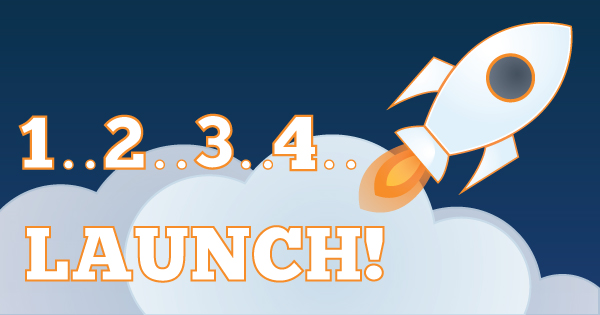This is a guest contribution from Danny Iny.
You’ve heard it all before.
Yet another internet marketer has “taken the stage”, extolling the virtues of the newest “revolutionary” product or tactic that is guaranteed to blow the wheels off your competition and have you rolling around in hundred-dollar bills before your next electric bill comes due.
But you can only hear the proclamations so many times before you start to get skeptical.
Like, really skeptical.
So you tune out the noise and do your best to keep your head down, grinding away at the same old thing you’ve been working on for months.
Six months later, after spending countless hours and a lot of money that you really hope you make back in sales…
You end up with the same old outcome.
But what if there was a way to create the kind of success all those “Get Rich Quick” gurus are spouting on about?
What if it turned out to be a process that’s not only profitable, but also scalable and repeatable?
And… what if someone was finally able to crack the code?
Turns out, all it takes is a little bit of telepathy.
Step One: Tune In (Listen to What Your Audience is Broadcasting)
Now, before we get started and you get all excited (or disappointed) that this is (just) another get-rich-quick scheme… 😉
…let’s get one thing straight: this process takes hard work – a lot of it.
If you don’t put in the work, that fat pile of cash isn’t going to just materialize all by itself.
The first step is to listen to your audience.
I can hear you already: “but, Danny! I do listen to my audience. I give them what they say they want, and they *still* aren’t buying anything that I offer!”
But, chances are that the way that you’re listening isn’t quite what it could be.
First, the good news – chances are that you are an expert in your field, and because you do listen to your audience, you have a good sense of your industry.
But, there’s also bad news – the likelihood is high that you have preconceived notions about both the industry and your customers, and these preconceptions are keeping you from breaking through.
Gather Data About Your Audience
There are a few different ways to collect information from your audience:
- Eavesdropping on Conversations
Even if you don’t have an audience, you can start listening to conversations around the web.
Eavesdropping is the same online as it is in person, and by finding out where your target audience hangs out, you can start to listen to and track the things that they say.
Are they active on Facebook groups or Twitter? Do they leave lots of comments on the big blogs in your industry? Are they involved in forums around your topic?
Pay attention to the exact words that they use to describe the problems.
- Taking note of email conversations
If you already have an established audience, you can use this to your advantage. It’s not a requirement, just an added bonus. FYI, this is the only step that requires an audience!
Take note of the things that your audience emails you about. Do they have specific issues or topics that they bring up regularly? Do many of your readers talk or complain about the same things?
And, if you’re feeling a little bit shaky about your connection to your audience, here’s a great ProBlogger post about building up your blog.
- Simple surveys
Whether you have an audience or not, you can create a simple survey to gather even more data.
And when I say simple, I mean simple: just two questions long!
The first question will be, “if you had 15 minutes to ask me anything, what would it be” – this question can be broadened (and clarified) by including a topic area, if you don’t have an established audience or are bringing people to your survey via advertising.
The second question will then be, “if I promise not to sell you anything, can I follow up with a phone call?”
(Hat tip to Ryan Levesque and his Deep Dive Survey process for the survey information in this section!)
- Informational interviews
Anyone who agreed to the phone call in the survey will then go on to do an informational interview with you.
The most important things to cover in these informational interviews are what challenges they are dealing with at the moment, and what they’re currently doing to solve the problem.
This is where you can really dive deep into the issue that your audience is having and ask clarifying questions, to get to the heart of what’s going on.
These interviews will last somewhere around thirty minutes or so, just long enough for you to gather the data you need, without being overwhelming to your interviewee.
Analyze the Data You Gathered
The next step after you finish gathering your data is to analyze it!
You’ll want to search through the information that you’ve been collecting, and look for patterns:
- Is there a topic area that comes up often?
- Are lots of people having the same (or a similar) problem?
Then, figure out how you can solve the problem. Is there a product or service that you can provide for them that would make a huge impact on their lives? What can you easily and dependably provide for them?
Step Two: Talk Back (How to Ask What Your Audience Wants)
Once you have figured out how to solve your audience’s problem, you might think that it’s time to retreat to your office and create the solution.
But, wait!
There’s still more to do, to make sure that your audience wants (and will pay for) the solution that you are ready to offer them.
Even if you started out the process without an audience, by now you have a list of people who have answered your survey and participated in your informational interviews.
You will present the offer framed as a response to their demand: “here’s this thing that you asked me for – guess what – I’m going to do it for you!”
You’re not actually selling anything at this point, but rather just gathering more feedback and validation about whether you will proceed with your offer or not.
If the responses that you get range anywhere in the “vaguely interested” to “crickets” range, it’s probably time to go back to the drawing board, to look through your data and see if there is a different direction that you can go.
But, if your audience responds enthusiastically, reaching out with grabby hands and shouting, “yes, yes, yes!! Gimme!” then you know that you are on the right track!
Only after hearing this enthusiastic response should you move on to the next step.
Step Three: Set off the Fireworks (Invite Your Audience to the Show)
If you’re not feeling completely comfortable with releasing something for sale on your blog just yet, check out this article about what to do before you launch a product.
The key to planning a pilot is to offer minimum viable richness: only as much as needed, and no more. There won’t be extra bells and whistles, no fancy software is necessary, and the first students will be early adopters – kind of like beta testers for a new software product.
Your early adopters will have access to the material for a fraction of what the eventual course will cost; this discount is in exchange for the feedback that they will give you throughout the course.
You will open up a brief registration window to sell your pilot course, in this order:
- Open the cart – Send out an email to your audience letting them know that you are offering the pilot.
- Send follow up emails – If you have trouble with the actual selling, head over here to grab a set of sales templates that you can swipe and use word for word in your sales process, on the house. But move quickly – they are only going to be free for the next couple of days!
- Close the cart – Once the registration window is done, close the cart!
- Decide whether to move forward – If your pilot only sold a few spots, it’s time to decide whether to move forward – did enough people sign up to make the experience worth it for both you and them?
(If only your mom and your Aunt Betty signed up, it may be time to refund their money and head back to the drawing board! Sorry, Aunt Betty.)
But, if you sold most of the spots, or even sold out, congratulations! You have validated that your offer is a good one, and that people will pay for the solution to their problem.
Now it’s finally time to make good on your promise, and solve their problem!
Step Four: Blow Their Minds! (Launch to Massive Success)
Even though this is only a pilot of your eventual product or course, you still want to provide an amazing experience for your students.
You want to create an educational experience that is efficient, effective and appealing.
You want to make sure that you teach only what your students need to know, and to be crystal clear and thorough in teaching the content.
One way to do this is to ask, “based on my students’ desired outcome, what do they need to know?”
You will want to build in small wins for your students, structuring the course content in such a way that your students are able to create a habit of succeeding!
You will plan your course material so that one idea builds on the ones taught previously, and you will run the program from a basic outline of the course.
The pilot course won’t be perfect, but it will teach you a lot about what can be improved for the eventual full course.
And, as long as you are delivering what you promised to your pilot students, the likelihood is that both you and they will learn a lot from the process!
Tying the Process Together
So now you have the full step-by-step process of how to launch a product from scratch, with almost guaranteed results.
You’ve learned how to:
- Tune in telepathically to your audience;
- Figure out how to solve their biggest problems;
- Use their feedback to validate that they will actually pull out their wallets;
- And, work with them to pilot the solution to success!
If you’re still feeling like you’re not quite ready, I’ll be hosting a webinar on Saturday, February 7 that will walk through the process in more depth.
By now you can see that it’s definitely not a get-rich-quick scheme. But, when used properly, this process can absolutely bring some cash in the door.
You now wield the power that those “Get Rich Quick” gurus only dream about.
That means it’s time to get out there and start collaborating with your audience.
They have a problem, and they need YOU to solve it!
Danny Iny is the co-founder of Firepole Marketing, and creator of the Course Builder’s Laboratory. If you want to learn more about this, you’re invited to attend a one-time only free training webinar that he’s hosting, teaching “How to Build and Launch a Blockbuster Product… Every Time!”
Originally at: Blog Tips at ProBlogger
4 Steps to Successful Product Creation Every Blogger Should Know (But Most Don’t!)

